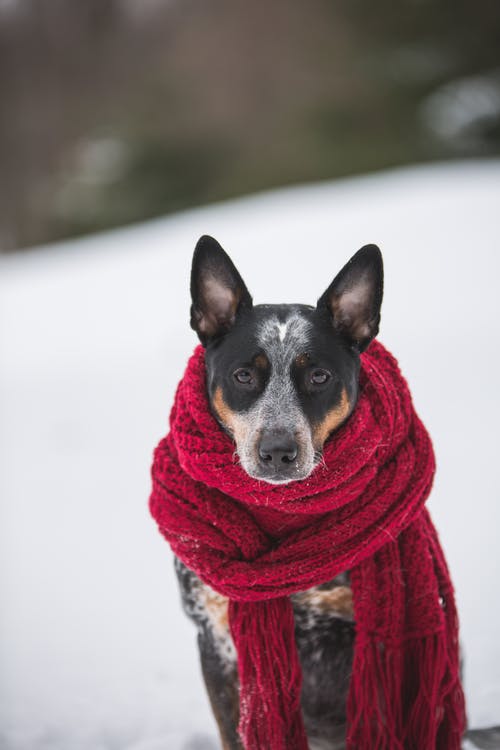Holidays bring changes and changes… bring STRESS
Holidays, vacations, and any change in routine are typically stressful times for most of us, and seriously stresses out your animals. But, they don’t have to be if you know what to do to minimize the stress in dogs, cats and other pets.
Taking the right steps to de-stress your animal helps you de-stress too, because it helps you plan in ways that are more manageable, creates more certainty, and helps you be less emotionally imbalanced.
Remember that your animal mirrors you, so if you’re stressed, frustrated, anxious, nervous or worried in any way, that’s the message they get and that’s what they’ll act out (mirror back) for you.
Instability is not your animal’s friend!
Your job is to make their environment as stable, safe and calming as possible. That includes preparing them properly in advance for all changes in routine.
Monitor them carefully during unusual events and pay attention to stress clues and signals. They need your help.
That doesn’t mean that they can’t experience changes in routine without going bonkers, or that they have to be completely protected from anything new or different…
It simply means that they need to know (just like you, your friend, family member or a child needs to know):
- What to expect
- When things will happen, who’s involved
- What you need from them/how you want them to behave
- How long you’ll be gone if you’re leaving them
- Whether they’ll be in a kennel or boarded while you’re gone
- That you’re coming back and when you’ll pick them up to go home again
- Whether they’ll be coming with you on the trip, and what to expect if they do go
- They need a way to tell you what they want, when they’re concerned or don’t feel well
- And, if they have questions or concerns they need to know you care and you’re there for them by answering them.
So you can see how important it is to help your animals de-stress through the holidays when going on vacations, moving or when you go on trips together. This article will show you how to see signs of stress in dogs or cats as well as how to help your furry friends.
There are many Pet Stress Clues. Here are the three most common ones:
1. Excessive panting or heavy breathing.
This can also look like running around uncontrollably, being restless, hyperactive, bouncing off the walls and acting unpredictably.
Pay attention to the signs and don’t ignore them!
They aren’t happy; they are stressed and need your help.
Be consciously aware and calmly and confidently create a time out space where they can calm down and destress for awhile…. Then leave them alone. Check on them later and talk about what happened together.
2. Holding their breath and being rigid, tense, a worried expression, or they go into a hiding mode.
If that’s the case, then give them a safe zone. That could be their kennel, or simply shut them into a room where they can calm down on their own.
They have become hyper-stimulated and need a chance for their sympathetic nervous system to reboot.
Some animals are easily over stimulated, so notice where their tolerance levels are and try not to exceed that.
3. Acting out with really bad behavior.
Usually when they get to this stress clue, they’ve already blown through Stress Clues 1 and 2!
They are over the top before you’ve noticed or paid attention and taken appropriate action. Not good.
What you can do about it at this point is simply remove them from the area and take them back to their safe, quiet zone.
What can you do if you see any of these Pet Stress Signs?
1. Keep their routine stable in as many ways as you can.
Feeding routines should be at the same time of day with their same foods as much as possible. Keep to their same sleep schedule as much as possible.
If they’re being boarded, take their favorite toys, food and treats, and be sure they have things of their own with yours and their scent’s on them (scent is critically important to animals). Then when they smell it, it feels comforting. Their own little slice of home to help them get through this.
2. Discharge energy – they need exercise!
If they start getting fussy, irritable, depressed or start acting out, they need play therapy (for cats) or a great walk or run to work out the stress in dogs.
Exercise, discipline (rules, limitations, boundaries, include and continue training and reward for good behavior) keeps their world more stable, and then affection, in that order.
3. No look – No touch – No eye contact
No contact until they calm down and are ready to connect calmly with others on your terms.
For animals that get too excited or over stimulated, practice (and tell your guests or other people you’re in contact with) to ignore them until they settle down.
4. Be calm, confident and assertive
Remain calm no matter what happens. If they are acting out with bad behavior, don’t yell, don’t call their name and don’t chase them.
Use your correcting voice and your body language to distract or redirect them until you can better control them.
Then simply remove them from the area until they’ve calmed down, and you can have your chat together.
5. Tell them what you want them to do!
They need a job and they need to know what’s expected of them, and how you want them to behave. So tell them!
First, after they’ve calmed down and can listen to you again, talk to them about their behavior.
Image what they did that was bad – be specific – and share with them how upset that made you so they can connect the dots for greater understanding.
Then, feel your emotions about what happened. Doing this properly is critical because they can feel them too. Emotions let your animal know why it is important to you.
Next, image what the consequence of their bad behavior is or could have been, showing them the worst case scenario. That helps them put the story into context so it makes more sense from their viewpoint.
Finally, tell them the story about what you wanted them to do in that situation, how you would feel if they did that, and how happy that would make you feel.
This way you address the bad behavior, but you also offer the positive suggestion for what you really want to have happen. Always spin the story to the positive so they know what to do next time.
Want more?
Discover how to communicate with animals yourself! Start with your copy of our free ebook Hidden Secrets to Communicating With Pets.
Discover all The Heart School of Animal Communication online courses, classes and the BEST online Animal Talk Coaching & Mastery Club membership opportunities.
Your cat, your dog, your horse or your bird depends on you to care for them. And a big part of your doing that successfully is in knowing how to understand them and communicate with them on a daily basis.
Plus, communicating with your animals is really fun, too. When properly prepared, they can give you all kinds of feedback about your family and friends, alert you to any potential trouble brewing, and partner up with you to have the best time possible.
Focusing on creating a more stable environment helps your animals be calm, peaceful, happier and healthier during the holiday and will help you enjoy them more too.
Val Heart The Real Dr Doolittle! Val is internationally known as an expert animal communicator, teacher, author & master healer specializing in resolving behavior, training, performance, and health problems, and assisting with end of life situations. She’s the founder of The Heart School of Animal Communication and hosts the BEST Online Animal Talk Coaching & Mastery Club in the world!
(c) Heart Communication Enterprises LLC. All Rights Reserved. Reprint rights by request only.
.
Enjoyed this article? Here are some other popular posts you might like:
Being A Dog Whisperer Comes In Handy!
The Three Fundamental Animal Talk Principles
Discovering the Joy of Visualization and Developing Your Intuition





















Leave a Reply